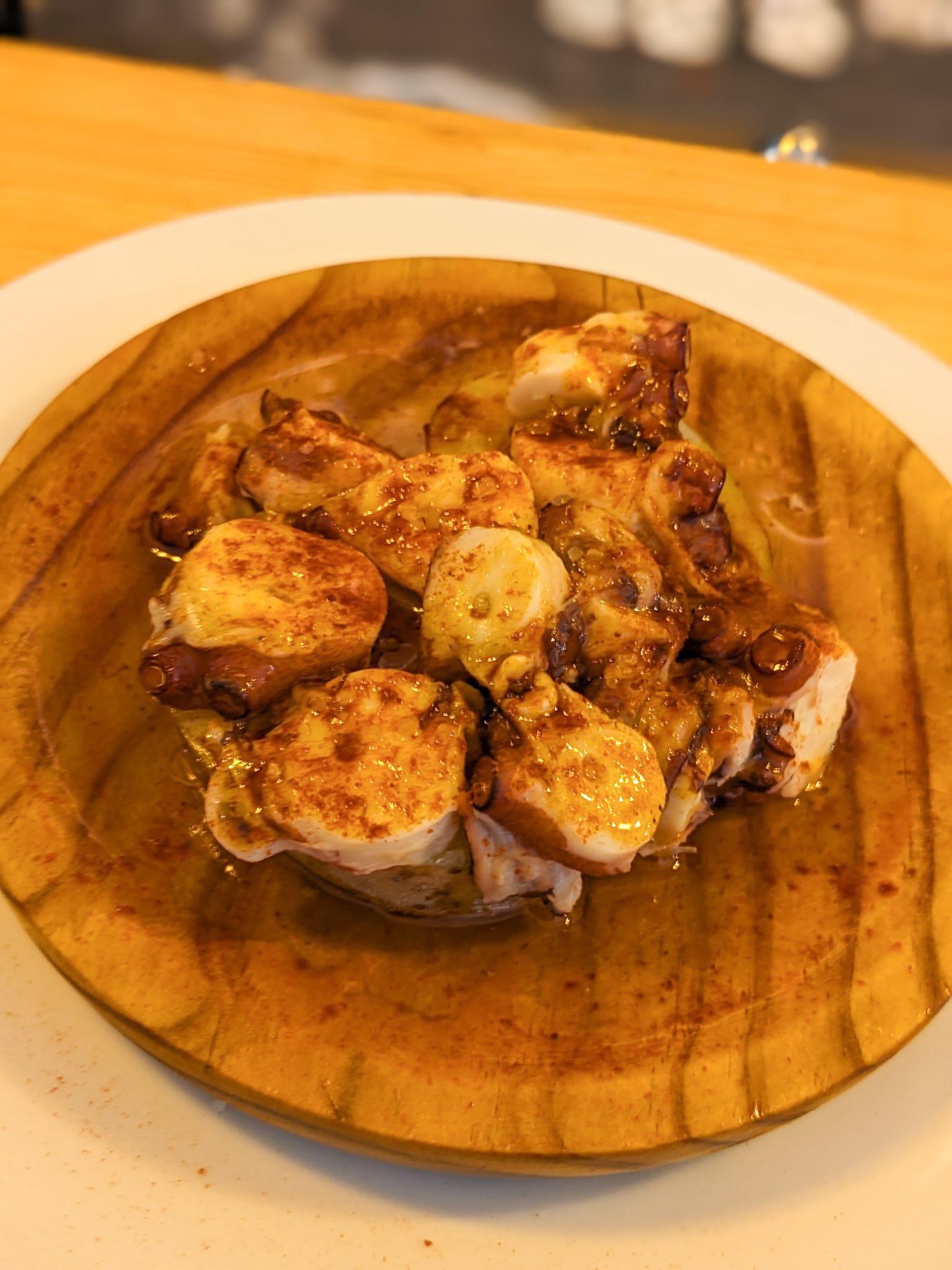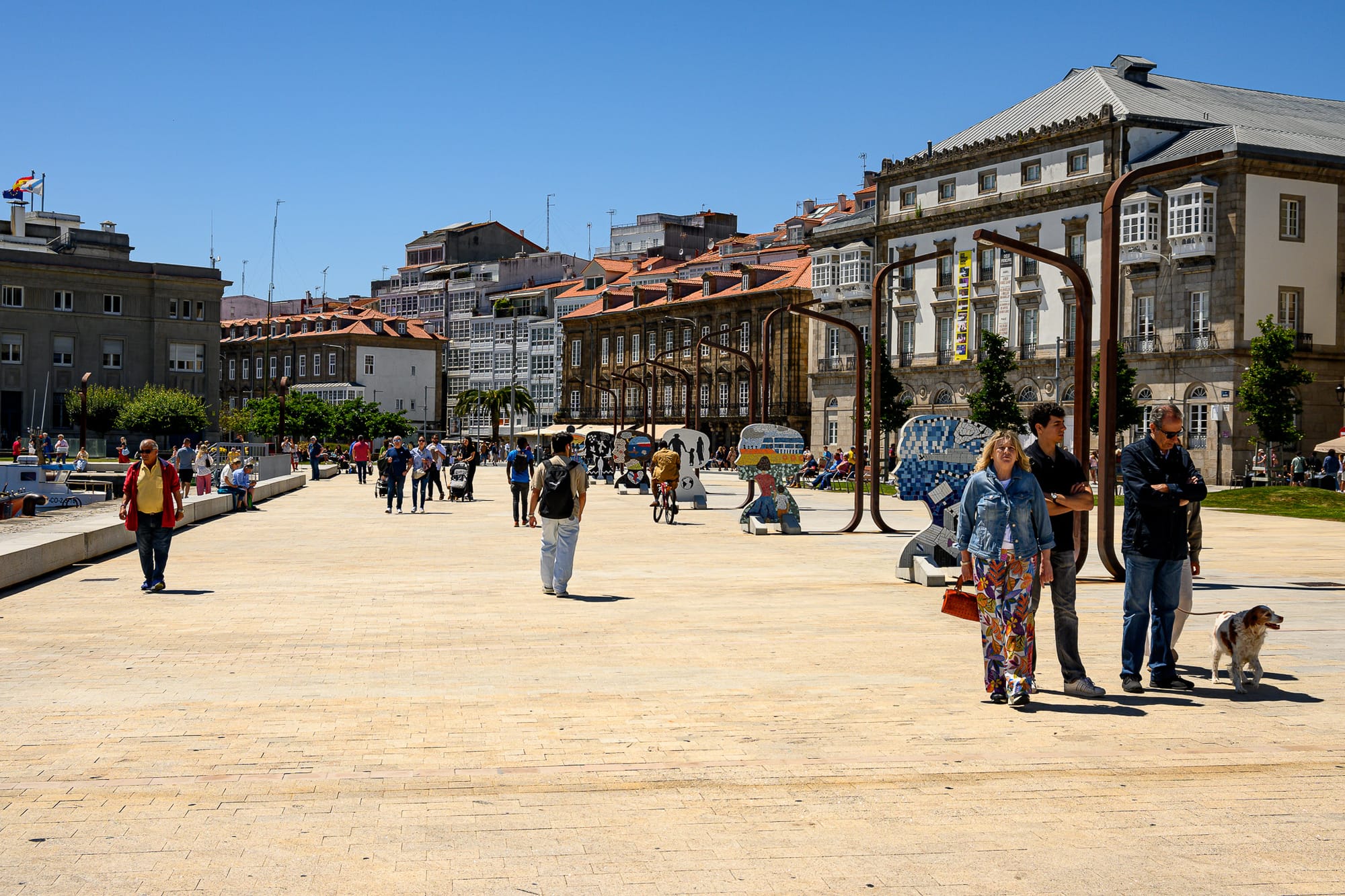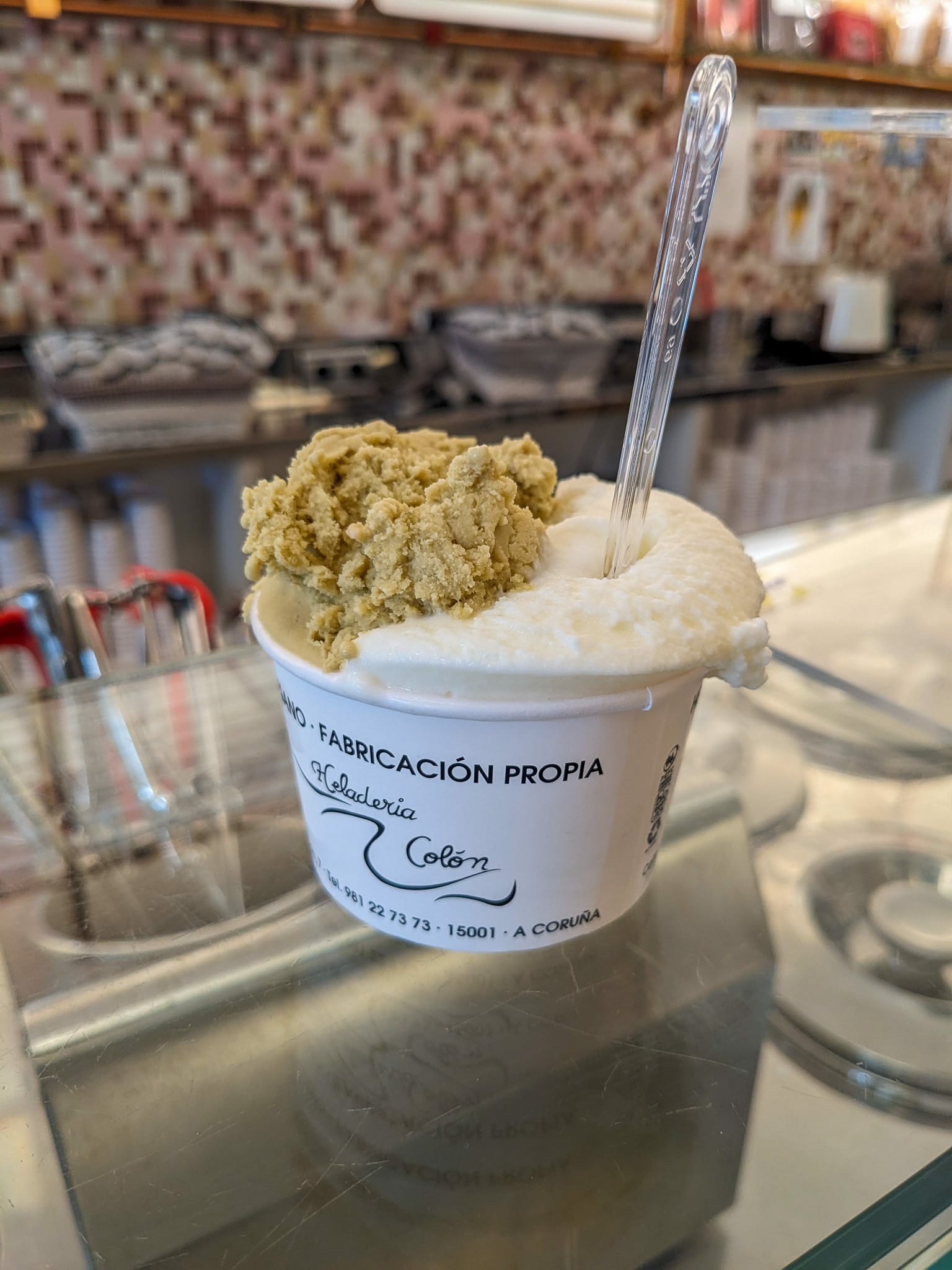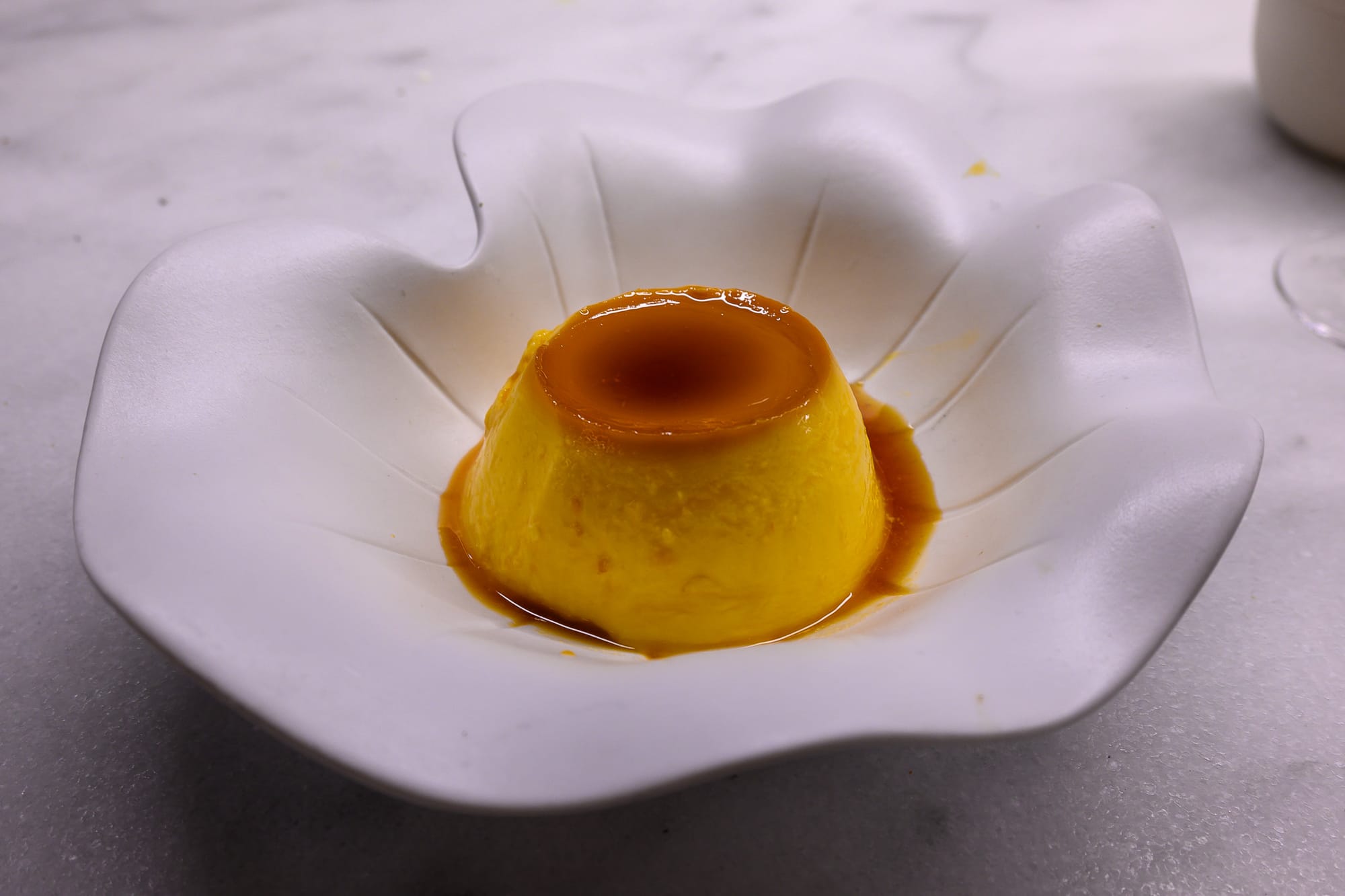Galicia Road Trip Day 3: A Coruña
An ancient lighthouse and the galerias in the harbor are the city's highlights.

This post is part 3 of our road trip to Galicia. If you want to read about the first part in Santiago or the second part in Lugo, please check the links below.


A Coruña is the second-largest city in Galicia by population, after Vigo. It's more than twice the size of Santiago and Lugo. We started driving early in the morning to get there as soon as possible to maximize our time there. It's an easy drive, with the same highway (A-6) taking you all the way there in just over an hour.
My wife had two sights marked as must-dos: Torre de Hércules, an Ancient Roman lighthouse, and Monte de San Pedro, a park with great views. We had a lot of time before we could check in to our hotel, so we decided to head to Torre de Hércules first.
The area was pretty crowded on a Saturday. In and around the lighthouse, the crowd mainly consisted of domestic tourists, at least as far as we could tell. The area around it is quite a lovely seaside promenade, though, and it was mostly locals who populated it on their weekend walks. We walked up the path to the lighthouse, trying to give a wide berth to the bagpipe player there. Neither of us is a fan of the instrument.

While we could walk around the lighthouse, we found that you needed a ticket to enter, and they were full until a few hours later. It would have been a long wait, so we decided to return the next morning and to go to Monte de San Pedro instead. The park is across the city on the other side of the coast, and it took us a 15-minute drive through the town to get there.
The view is beautiful, including the lighthouse we had just been to. The park's highlights are Cúpula Atlántica, a 360-degree observation dome, and a panoramic elevator in the form of a large glass ball that goes up and down the cliffs. Both were closed, so we walked to the other highlight of the area, the massive cannons built for sea defense. Their installation was finished in 1933. They were fired 19 times after that, before the final shot in 1977 in the process of cleaning them.




The park is very nicely maintained, and after spending some time walking around, we made our way to our hotel to check in before heading out for lunch.
We picked a place called La Sifoneria Gastrobar to grab some small plates and, of course, vermouth. While we could find a bar seat, the place was otherwise packed. It looked like it was being run by a couple. The server told us that we were free to sit down, but they were busy, and the food could take a while. We didn't mind, and in the end, the wait wasn't that bad either. I think they were simply being cautious because how tourists can sometimes be impatient in their rush to check all the boxes in their itinerary.
They had a few options for vermouth, so we ordered one for each: Bocamanga and Botafumeiro. Our seafood tapas were steamed mussels, grilled scallops, and Pulpo a Feira. They were all simply prepared but good. We preferred the version of Pulpo a Feira we had in Lugo the day before. It was also fun watching the food prepared in the small kitchen.





A Coruña is a port city, and it's a fun walk around the harbor. While we were there, a massive cruise ship docked there as well. One of the interesting sights is the architectural feature called "galerias" - enclosed glass balconies. We've also seen them in Lugo and Santiago, but not to this extent. These glass-enclosed balconies protect against rain and wind while allowing natural light and heat. The architectural efficiency of the Galería lies in creating a hybrid indoor-outdoor space with a solid and light facade, capturing the solar energy and storing it in the adjoining wall, which then releases the heat at night. Also, they look pretty amazing when you see them wall-to-wall, covering entire buildings.






A few hours was enough to walk around the old city. We passed a church, Igrexa de Santiago, considered the oldest temple in A Coruna. They were getting ready for a wedding, with the musicians practicing up the choir loft. The Maria Pita square is nearby, named after a local heroine. According to Wikipedia, during an English attack in the 16th century, after Pita's husband was mortally wounded, she snatched the English captain's banner and killed him, demoralizing the English troops. Her statue sits right across the city hall, an amazing-looking building built in an eclectic style. Also nearby is the Church of St. George, built in the Baroque style. This is where the first same-sex marriage in Spain took place.




The weather was nice, so after returning to the harbor area, we decided to get some ice cream. We tried the very well-reviewed Heladería Colón, but while it wasn't bad, it wasn't great either. As we walked in mild disappointment, we saw a Bico de Xeado just down the street, which we had tried in Lugo the day before and was really good.


We were very excited when we made our way to Nado for dinner. The Michelin Guide recommends it, and our initial experience was encouraging. We really liked the interior, and we liked the open kitchen concept. We thought the tasting menu was well-priced, so we decided to go for it. It was hard to ignore the fresh bread being grilled over coal fire just across from our table, so we ordered that too. Unfortunately, everything looked better than it tasted. The trout was the only dish we would order again, and the flan at the end was the only highlight. Overall, the menu could have been more consistent in quality, and in the end, when we left, we thought it was definitely not worth the price. When making a reservation, the choice was between Nado and Árbore da Veira up in Monte de San Pedro. Maybe we will get a chance to try them on our next visit.









We finished our evening by walking around the more residential areas behind our hotel. In the morning, after packing up, we went back to Torre de Hércules, this time with our tickets. You can see why they run out of them quickly. Walkways and stairs are very narrow inside. I think it would turn to chaos if they let more than maybe 25 people in at the same time. Considering how old this lighthouse is, it is quite an experience to walk up. While there is no definitive date, it is thought to be first built in the 1st century AD. Its website has a lot of information, and I highly recommend you visit it to read more about it. The view at the top of it is also a sight to behold. If you do only one "tourist" activity in A Coruña, I would say this should be it.





Once again, we gave the bagpipe player a wide berth on our way down, and we got in our car and headed toward our final destination, Pontevedra.

